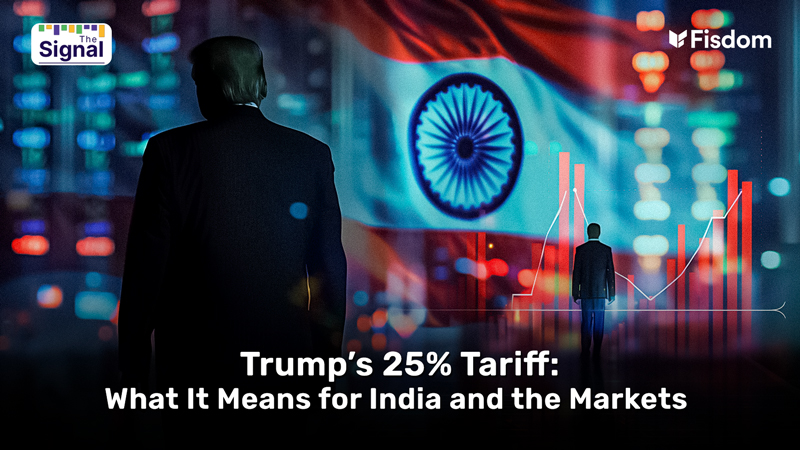
Market cycles have always been a test of investor patience. But in recent years, Indian mutual fund investors have repeatedly shown that they are no longer swayed by short-term swings or global noise. From pandemic-induced turmoil to inflation scares, from Donald Trump’s tariff shocks to rising interest rates, domestic investors have stood firm—proving that faith in the India growth story remains intact.
This resilience is not anecdotal—it is reflected in hard numbers. According to the Association of Mutual Funds in India (AMFI), equity-oriented mutual funds witnessed net inflows of ₹42,672 crore in July, representing a sharp 81% rise compared to June. This surge in participation came even as benchmark indices such as the Nifty 50 and Sensex corrected nearly 3% during the month. For perspective, this marked the 53rd consecutive month of net inflows into equity mutual funds, underscoring the commitment of retail investors despite periodic bouts of volatility.
The Drivers Behind Consistent Flows
A key driver of July’s momentum was the ₹30,416 crore mobilised through New Fund Offers (NFOs), with thematic funds alone collecting around ₹9,000 crore. The appetite for differentiated products—whether sectoral or theme-based—highlights how investors are not just chasing returns but actively diversifying portfolios.
Small- and mid-cap categories continue to enjoy overwhelming retail support. Small-cap schemes, in particular, saw inflows rise 61% month-on-month to ₹6,484 crore, while mid-cap funds attracted ₹5,182 crore, a 38% jump from June. This preference suggests investors are comfortable taking on higher risk for the potential of long-term outperformance, even as concerns over valuations linger in certain market segments.
But the real story lies in the Systematic Investment Plan (SIP) segment, which remains the bedrock of retail investing. In July, SIP contributions stood at ₹28,464 crore, accounting for nearly two-thirds of the month’s inflows into AMCs. More importantly, AMFI reported a net addition of 2.5 million SIP accounts, taking the total tally to 94.4 million accounts.
SIPs: The Silent Force of Stability
SIPs have long been hailed as the “steady engine” of India’s mutual fund industry. By spreading investments over time and insulating against market timing risks, they encourage discipline among retail investors. The July numbers reaffirm this view.
That said, the data also brings nuance. The SIP discontinuation rate (or stoppage ratio) rose to 62.7% in July from 56.1% in June, meaning more investors either paused or terminated their contributions. At first glance, this may appear worrying. However, analysts argue that stoppage ratios can be misleading because AMFI tracks them by the number of registrations, not in rupee terms. Moreover, stoppages often include expired SIP mandates or switches, not just outright exits.
A more telling measure is the Contributing SIP Ratio—the proportion of active SIPs making regular contributions to total registered accounts. After the April 2025 clean-up exercise, when defunct accounts were purged and stoppage ratios temporarily spiked above 350%, the contributing SIP ratio has steadily improved. Today, it stands close to 96%, a level that reflects genuine investor engagement and healthy industry dynamics.
Retail Investors as a Counterbalance
What makes India unique is how retail investors—traditionally considered the weakest hands in the market—are now acting as stabilisers. Their flows are increasingly counter-cyclical, rising during periods when foreign institutional investors (FIIs) are pulling money out. This not only reduces dependence on global liquidity but also strengthens the depth of domestic capital markets.
The steady rise of SIPs exemplifies this trend. By ensuring a monthly pipeline of funds, retail participation cushions equity markets from external shocks—be it geopolitical conflicts, global inflation worries, or erratic foreign flows. It also ensures that companies have access to stable domestic capital, reinforcing the link between household savings and national growth.
The Bigger Picture
The broader message emerging from July’s mutual fund data is clear: Indian investors are steadily moving away from speculative behaviour towards disciplined, long-term investing. They are learning to stay invested rather than attempting to time market cycles. This behavioural shift is crucial because it aligns investor interests with the long-term trajectory of India’s economy, which continues to offer structural growth opportunities despite near-term headwinds.
For wealth managers and policymakers, this resilience carries two implications. First, retail flows—especially through SIPs—will likely remain the foundation of India’s equity culture. Second, the industry needs more transparent and granular disclosure around stoppages and net SIP data. This would provide a clearer picture of investor behaviour and help build further trust.
Conclusion
Despite market volatility, global uncertainties, and domestic economic challenges, Indian mutual fund investors have proven to be unwavering. Their confidence is reflected not just in record inflows but in the consistency of those inflows. Small- and mid-cap funds continue to attract robust interest, NFOs are seeing enthusiastic participation, and SIPs are powering steady capital formation.
The resilience of retail investors tells a larger story about India’s maturing financial markets. It shows that the average household saver is no longer swayed by panic headlines but is instead embracing discipline, patience, and conviction in the India growth story. Over time, this shift will not only reward individual investors but also serve as a cornerstone for the stability and growth of India’s capital markets.
Market this week
| 11th Aug 2025 (Open) | 14th Aug 2025 (Close) | %Change | |
| Nifty 50 | ₹ 24,372 | ₹ 24,631 | 1.1% |
| Sensex | ₹ 79,885 | ₹ 80,598 | 0.9% |
Source: BSE and NSE
- The Indian market ended a six-week losing streak, posting a gain in the volatile, truncated week.
- Positive momentum was supported by sustained DII buying, aided by softer US and India CPI data that boosted hopes of rate cuts in upcoming policy meetings.
- Other supportive factors included satisfactory monsoon progress, extension of China’s tariff deadline, rupee appreciation, declining oil prices, and encouraging corporate earnings.
- Sector-wise, Nifty Healthcare and Pharma indices gained 3.5% each, Nifty Auto rose 2.7%, while Nifty PSU Bank added 2%.
- In contrast, Nifty Consumer Durables and FMCG indices slipped 0.5% each.
- FIIs continued their selling spree for the seventh straight week, offloading equities worth ₹10,172.64 crore.
- DIIs, on the other hand, extended their buying streak to the 17th week, purchasing equities worth ₹18,999.76 crore.
Weekly Leaderboard
| NSE Top Gainers | NSE Top Losers | ||||
| Stock | Change (%) | Stock | Change (%) | ||
| Apollo Hospitals | ▲ | 10.4% | Adani Ports and SEZ | ▼ | -1.9% |
| Eternal | ▲ | 5.8% | Bajaj Finance | ▼ | -1.8% |
| Cipla | ▲ | 5.3% | TATA Steel | ▼ | -1.7% |
| TATA Motors | ▲ | 4.9% | Indusind Bank | ▼ | -1.6% |
| Adani Enterprises | ▲ | 4.8% | ITC | ▼ | -0.7% |
Source: BSE
Stocks that made the news this week:
NSDL: Shares of National Securities Depository (NSDL) extended losses for the second straight session on August 14, slipping nearly 4 percent. The newly-listed stock has now corrected close to 18 percent from its record high in just three trading days. This came despite the company posting a healthy 15 percent year-on-year growth in Q1FY26 net profit at ₹89.63 crore, aided by a decline of over 14 percent in expenses to ₹228 crore during the quarter.
Deepak Nitrite: Deepak Nitrite dropped 5 percent to ₹1,785 after its June quarter earnings disappointed the Street. The company reported a 44.6 percent decline in net profit at ₹112 crore, compared with ₹202.5 crore a year ago. Weak performance has weighed on sentiment, with the stock already down more than 28 percent in 2025, sharply underperforming the Nifty 50’s 2 percent gain during the same period.
JSW Cement: JSW Cement shares slipped below their IPO price on August 14, erasing early listing gains of over 4 percent as investors booked profits. The IPO of the JSW Group company, priced at ₹139–147 per share, had received strong demand with 7.77 times subscription. However, concerns over the company’s inconsistent revenue and profit growth over the past three years weighed on post-listing performance.














